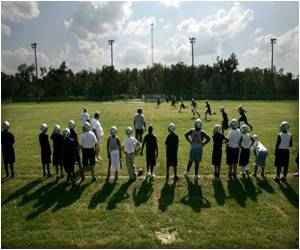High-resolution brain scans, coupled with computational analysis, could play a critical role in helping to detect concussions that conventional scans might miss.

TOP INSIGHT
Changes in communication between brain areas, as detected by magnetoencephalography (MEG), allowed researchers to detect concussion from individual scans, in situations where MRI or CT failed.
The researchers also note that related conditions such as mild traumatic brain injury, often associated with football player collisions, don't appear on conventional scans.
"Changes in communication between brain areas, as detected by MEG, allowed us to detect concussion from individual scans, in situations where MRI or CT failed," says Vakorin. The researchers are scientists with the Behavioral and Cognitive Neuroscience Institute based at SFU, and SFU's ImageTech Lab, a new facility at Surrey Memorial Hospital. Its research-dedicated MEG and MRI scanners make the lab unique in western Canada.
The researchers took MEG scans of 41 men between 20-44 years of age. Half had been diagnosed with concussions within the past three months.
They found that concussions were associated with alterations in the interactions between different brain areas - in other words, there were observable changes in how areas of the brain communicate with one another.
Relationships between symptom severity and MEG-based classification also show that these methods may provide important measurements of changes in the brain during concussion recovery.
Source-Eurekalert
 MEDINDIA
MEDINDIA



 Email
Email








